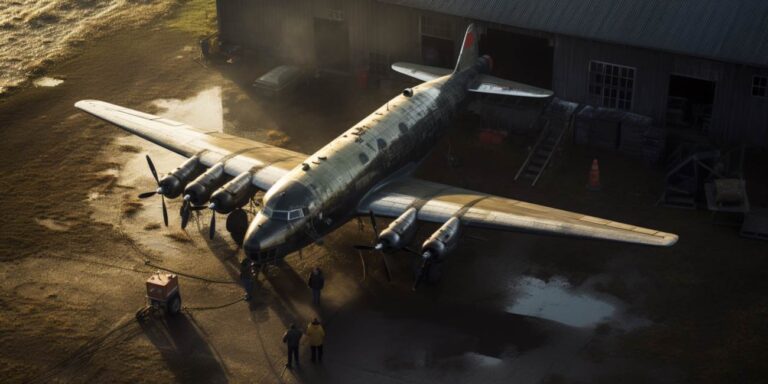The first step in how to transport aircraft engines is the meticulous packaging of these intricate and high-value components. Engine components are sensitive to external factors like moisture, temperature, and physical shock. Specialized crating is employed to shield the engines from these elements. The crates are designed to provide a protective environment and prevent any external forces from compromising the engine’s structure.
Moreover, the weight distribution within the crate is crucial to maintaining balance during transit. Imbalanced weight can lead to unnecessary stress on certain components, potentially causing irreparable damage. To address this, engine transport crates are meticulously engineered to evenly distribute the weight, ensuring stability and minimizing the risk of damage.
When it comes to the actual transportation logistics, choosing the right mode of transport is paramount. The shipping container must not only accommodate the size of the engine but also provide the necessary security and stability. Air transportation, often the preferred method, demands customized cargo planes equipped with specialized infrastructure to secure and transport these engines safely.
Within the cargo plane, custom-engineered cradles are employed to secure the engines in place, preventing any movement during flight. These cradles act as a safeguard against turbulence and unexpected jolts that may occur during the journey. The use of advanced securing mechanisms is crucial to guarantee the engine’s stability throughout the transportation process.
Documentation plays a pivotal role in how to transport aircraft engines. Comprehensive records detailing the engine specifications, packaging procedures, and handling instructions must accompany the shipment. This not only aids in efficient customs clearance but also ensures that the receiving party is well-informed about the engine’s transport requirements.
Proper preparation and packaging of aircraft engines for transport
When it comes to the proper preparation and packaging of aircraft engines for transport, meticulous attention to detail is paramount. Transporting aircraft engines is a delicate operation that demands precision, expertise, and state-of-the-art equipment. To ensure the safety of these high-value and sensitive components, a well-defined process is followed.
The first step in the process is the thorough inspection and assessment of the aircraft engine. This involves a team of skilled technicians who scrutinize every part of the engine to identify any existing damage or wear and tear. Any discrepancies found are duly noted, and a comprehensive report is generated. This information serves as the basis for the subsequent steps in the preparation process.
Once the inspection is complete, the next crucial phase involves the dismantling of the engine into manageable components. Each part is carefully disassembled, taking into consideration the intricacies of the engine’s design. This disassembly process requires a high level of technical proficiency to ensure that no damage occurs during this crucial step.
After disassembly, the individual components undergo a meticulous cleaning and preservation process. This involves the removal of any contaminants or foreign particles that may have accumulated during the engine’s operational life. Specialized cleaning agents are used to maintain the integrity of the materials while ensuring a pristine surface for each component.
With the cleaned components in hand, the packaging phase commences. This is a critical step in the process, as it involves the selection of materials that provide both protection and stability during transportation. The use of customized crates and shock-absorbent materials is common to safeguard against any potential shocks or vibrations that may occur during transit.
Additionally, humidity and temperature controls are implemented within the packaging to mitigate the impact of environmental factors. This is especially crucial for long-haul transport, where the engine may be exposed to varying climate conditions. The packaging is designed not only to protect against physical damage but also to create a controlled environment that preserves the engine’s condition.
For documentation purposes and to facilitate a smooth transit process, a detailed inventory list is created. This list includes each component of the engine along with corresponding identification numbers and descriptions. This meticulous record-keeping ensures that the assembly process at the destination is efficient and accurate.
Finally, the packaged components are loaded onto specialized transport vehicles. Depending on the size and weight of the engine, customized handling equipment such as cranes or lifting platforms may be employed. The loading process is executed with precision to avoid any jostling or impact that could compromise the integrity of the packaged components.
Choosing the right transport method for aircraft engines
When it comes to transporting cargo plane engines, the choice of the right transport method is critical to ensure efficiency and safety. The unique characteristics of truck, railway, and cargo plane transportation play a pivotal role in determining the most suitable option for this specialized cargo.
One of the primary considerations is the size and weight of the aircraft engines. Truck transportation is often the preferred choice for smaller engines that can be easily loaded onto flatbed trailers. The flexibility of road transport allows for direct delivery to the destination, making it a convenient option for short to medium distances. However, challenges may arise when dealing with larger engines that exceed the capacity of standard trucks.
For heavier and bulkier engines, railway transportation emerges as a viable solution. Rail networks offer the advantage of handling substantial loads, and the robust infrastructure ensures a smooth and stable journey. Rail transport is particularly advantageous for long-distance hauls, minimizing the need for multiple transfers between different modes of transportation. However, the accessibility of rail routes to specific destinations can be a limiting factor.
On the other hand, cargo planes provide unparalleled speed and direct access to virtually any location with an airport. This makes air transportation ideal for urgent deliveries or when the destination lacks efficient ground transportation infrastructure. While the speed of cargo plane transport is a clear advantage, the cost and environmental impact may be factors to consider, especially for large and heavy engines.
To illustrate the differences between these transport methods, consider the following comparison table:
| Transport Method | Advantages | Disadvantages |
|---|---|---|
| Truck | Flexibility for short to medium distances | Limitations on size and weight |
| Railway | High capacity for heavy engines | Limited accessibility to specific destinations |
| Cargo Plane | Rapid delivery and global reach | Higher cost and environmental impact |
Ultimately, the decision on the transport method for aircraft engines depends on various factors, including the size of the engines, distance to the destination, and the urgency of delivery. Balancing these considerations will lead to the most effective and economical choice for ensuring that engines reach their intended locations seamlessly.
Loading and unloading considerations when moving aircraft engines
When it comes to loading and unloading aircraft engines, a meticulous approach is crucial to ensure the safety of both personnel and equipment. The use of cranes plays a pivotal role in this intricate process, requiring a delicate balance between power and precision.
The first consideration revolves around the selection of an appropriate crane for the task at hand. The crane must possess the capacity to handle the weight and dimensions of the aircraft engine. Ramps are often employed to facilitate the smooth movement of the engine onto and off the aircraft.
Stability is a paramount concern during the loading and unloading process. The crane must be positioned on stable ground, and the surface should be capable of supporting both the crane and the engine’s weight. Any instability in the foundation can lead to catastrophic consequences.
Ensuring proper balance is another critical aspect. The crane operator must be well-versed in distributing the weight evenly to prevent tilting or tipping during the loading or unloading phase. This involves a careful assessment of the engine’s center of gravity and adjusting the crane‘s configuration accordingly.
As the aircraft engine is hoisted into the air, the issue of stability becomes even more pronounced. Wind and external forces can impact the balance of the suspended load. Advanced crane technologies incorporate stabilizing mechanisms to counteract these external influences, maintaining a secure and controlled movement.
Securing the aircraft engine during transit is a multifaceted challenge. Specialized fixtures and restraints are employed to immobilize the engine within the crane‘s grasp. This ensures that the engine remains in a fixed position, enhancing both stability and balance throughout the loading and unloading process.






